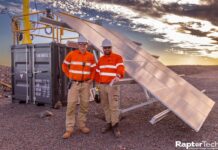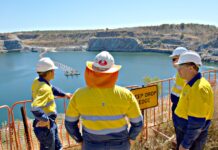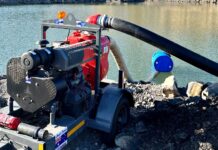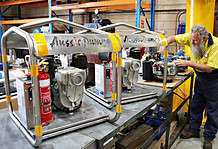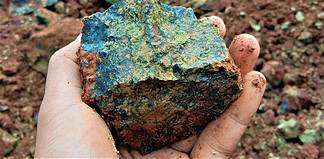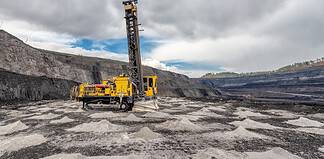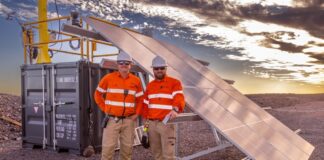IN a landmark agreement with Alinta Energy, Fortescue Metals Group (FMG) has announced that up to 100pc of daytime stationary energy requirements at Chichester Hub iron ore operations will be powered by renewable energy.
Remaining power requirements will be met through integrated battery storage and gas power station facilities.
The Chichester Solar Gas Hybrid project will see the construction of a 60MW solar photovoltaic generation facility at the Chichester Hub (comprising FMG’s Christmas Creek and Cloudbreak mining operations), along with a 60km transmission line linking the mining operations with Alinta Energy’s Newman gas-fired power station plus a 35MW battery facility.
Fortescue chief executive officer Elizabeth Gaines said that reliable and competitive energy generation remained an important consideration for the mining sector in WA.
“As a significant consumer of energy, we continue to identify opportunities that have the potential to lower our costs while also improving our carbon footprint,” Ms Gaines said.
“This landmark project is a first on this scale for the Pilbara and will reduce carbon emissions from stationary generation by around 40pc at Fortescue’s Christmas Creek and Cloudbreak mining operations, while driving long-term sustainable cost reductions to maintain Fortescue’s global cost leadership position.”
Ms Gaines said that the agreement marks a significant milestone in Fortescue’s energy strategy and represents a further step in the creation of FMG’s Pilbara Energy Connect project.
“In addition, Fortescue will invest an estimated US$250m in energy transmission infrastructure, which will complete the integration of Fortescue’s iron ore operations in the Pilbara into an efficient energy network,” she said.
“The Pilbara Energy Connect project builds on our previous energy initiatives, including the construction of the Fortescue River Gas Pipeline, the conversion of the Solomon Power Station from diesel to gas generation, as well as a partnership agreement with the Commonwealth Scientific and Industrial Research Organisation (CSIRO) to develop and commercialise hydrogen technologies.”
Alinta Energy managing director and chief executive officer Jeff Dimery applauded the FMG’s vision to make a cleaner and more connected energy supply for the Pilbara a reality.
“There’s a lot to be proud of in this project,” Mr Dimery said.
“Working together, we are on the cusp of demonstrating that renewables can drive Australia’s economic powerhouses forward – even for remote and complex industrial applications.”
Alinta Energy will receive Federal funding of A$24.2m from the Australian Renewable Energy Agency (ARENA) and A$90m from the Northern Australia Infrastructure Facility (NAIF) – upon satisfaction of standard conditions – and the NAIF loan remains subject to ratification from the WA Government.
NAIF chief executive officer Laurie Walker said the loan will help provide low emission renewable energy generation for large off grid customers and paves the way towards the creation of a more interconnected regional energy grid in the Pilbara.
“The project innovatively combines solar and gas fired power to compensate for the variability of solar sourced energy,” Mr Walker said.
“This investment by NAIF offers the opportunity to make a long-term difference to the Pilbara.”
His sentiments were echoed by ARENA chief executive officer Darren Miller, who said that the project could unlock further investment in renewable energy in the mining sector and other remote and energy intensive operations.
“Alinta’s project will demonstrate how renewable energy solutions can deliver critical energy requirements for major mining operations and help reduce emissions,” Mr Miller said.
“This will also show how interconnection of loads and different generation and storage – including solar, gas and battery storage – can provide secure and reliable electricity.”
Once completed in mid-2021, the project is expected to displace around 100 million litres annually of diesel used in the existing Christmas Creek and Cloudbreak power stations.





